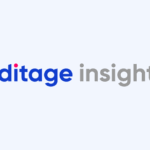Clarivate Analytics releases 2018 Journal Citation Reports

On June 26, Clarivate Analytics released the highly anticipated 2018 Journal Citation Reports (JCR). The reports are a combination of impact and influence metrics along with data from Web of Science. Used widely for evaluating peer-reviewed publications, the JCR provides annual journal metrics and indicators, including the Journal Impact Factor (JIF).
According to the press release, the latest edition “incorporates new analyses” that provide a deeper insight to the scientific community about journal performance. Some noteworthy highlights of the 2018 edition of the JCR are listed below:
- The report includes 11,655 listings from 234 disciplines, which represent a total of 80 countries.
- Of the journals that are included in the list, 276 received their first JIF.
- 20 journals that were observed to have indulged in citation-stacking and self-citation were excluded from the list, and will be re-evaluated for listing in the JCR on the basis of each year’s data update.
- On an average, the JIF scores have increased by 10%.
- Just as last year, the journal with the highest JIF percentile score is Quarterly Journal of Economics with a score of 99.858 (the last year’s score for the journal was 99.856).
- With the highest average JIF percentile of 99.701 for open access journals is Lancet Global Heath (the last year’s score for the journal was 99.699).
- The journal with the largest JIF increase is CA-A Cancer Journal for Clinicians (from 187.040 to 244.585).
- Nature, Science, PNAS, PLOS One, and the Journal of the American Chemical Society received more than 500,000 cites in total.
To enhance the depth of information included in the JCR, this year’s edition includes geographical data of authors, a list of top contributing institutions, and re-designed journal profile pages. Moreover, in order for the readers to develop a better understanding of how the JIF is calculated, the JCR provides document-level information as well.
Emmanuel Thiveaud, managing director, InCites, Clarivate Analytics, stated:
This year, with the addition of contextual information at the journal level and the ability to view the individual items contributing to the JIF, the refreshed JCR delivers an enhanced user experience and offers a deeper understanding of the key drivers of a journal’s success.
The editorial and management team of the JCR has included an Editorial Expression of Concern in this year’s JCR, following reports about “citation anomaly” in the JIF of some journals that may hint at manipulation of citation metrics. These journals are included in the JCR but are currently under investigation.
Related reading:
- Clarivate Analytics releases the 2017 Journal Citation Reports
- Thomson Reuters releases the 2016 Journal Citation Reports
- Interview with David Pendlebury, citation analyst at Clarivate Analytics: Misuse of bibliometric analysis shifts scientists’ focus from their research to pursuing scores







